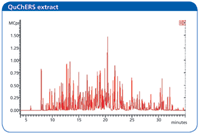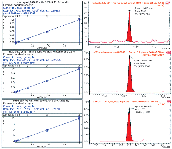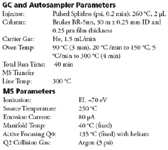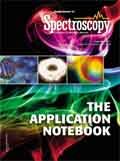Analysis of 258 Pesticides in Vegetable Matrix using Triple Quadrupole GC-MS/MS
There are nearly one thousand pesticides used in modern agricultural practice, and the residues of pesticides in the food from plant origins have been an increasing concern for consumers worldwide. Monitoring programs based analytical methodologies are established to ensure that the pesticide levels in plant foods are in compliance with national and international laws. However, the diversity of pesticides and complexity of food sample matrix present ongoing challenges for analytical chemists to meet the increasingly stringent requirements for sensitivity, precision, and throughput.
There are nearly one thousand pesticides used in modern agricultural practice, and the residues of pesticides in the food from plant origins have been an increasing concern for consumers worldwide. Monitoring programs based analytical methodologies are established to ensure that the pesticide levels in plant foods are in compliance with national and international laws. However, the diversity of pesticides and complexity of food sample matrix present ongoing challenges for analytical chemists to meet the increasingly stringent requirements for sensitivity, precision, and throughput.
This application note describes a GC–MS-MS method for detection of 258 pesticides in a vegetable matrix after extraction using the QuEChERS (Quick Easy Cheap Effective Rugged and Safe) method. The ease of method setup, and the sensitivity, linearity and precision of the GC–MS-MS system are demonstrated.
Experimental
The 258 pesticide standards were prepared from 5 commercial customer-made pesticide standard stocks (10 ppm in 1:1 hexane:acetone), each containing a group of 50–60 pesticides.

Figure 1: TIC Chromatogram of 258 pesticides spiked at 20 ppb in QuChERS extract of mixed color peppers.
The vegetable matrix was prepared by performing QuEChERS extraction on the mixed-color peppers (purchased from a local supermarket) according to the established procedure (2). The final acetonitrile extract was air-dried and reconstituted in 9:1 hexane:acetone before spiking pesticide standards for matrix-matched calibration experiments.

Figure 2: Examples of matrix matched calibration curves for trifuratin, HCB, and lindane from 0.1 to 100 ppb and their MRM chromatograms at 0.1 ppb.
The GC–MS-MS analysis was performed on a Bruker Scion TQ triple quadrupole mass spectrometer equipped with a Bruker 451 GC and CP 8400 auto sampler using the following conditions:

GC and Autosampler Parameters and MS Parameters
Results and Discussion
Figure 1 shows TIC chromatograms of a 40-min run of 258 pesticides belonging to various classes, including organochlorine, organophosphate, and pyrethroids. The pesticide peaks were eluted between 5.95 min and 34.7 min. The sensitivity for most of the compounds can reach 0.1–0.5 ppb (LOQ) and with good linearity up to 50 or 100 ppb (compound dependent). Examples of calibration curves and chromatograms at 0.1 ppb levels are shown in Figure 2. The representative results are summarized in Table I. As shown, the average response factors over the entire calibrations range have RSD ≤ 12%, demonstrating the excellent method precisions for analyzing these pesticides in the complex sample matrix.

Table I: Representative results of calibration of pesticides spike in vegetable matrix
Conclusions
The new SCION TQ GCMS system has shown excellent results for the analysis of multipesticide residues in vegetable matrix. The method has shown good sensitivity, linear calibration range and robustness in matrix. Detection limits are well below the regulated method required limits (MRLs) of 5–10 ppb.
Bruker Daltonics, Inc.
40 Manning Road, Billerica, MA 01821
tel. (978) 663-3660; fax (978) 667-5993
Website: www.bdal.com
